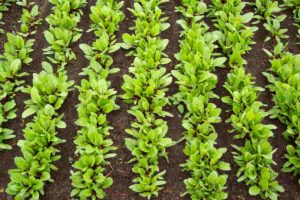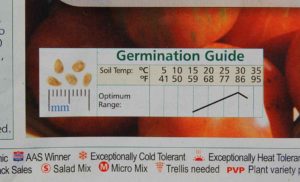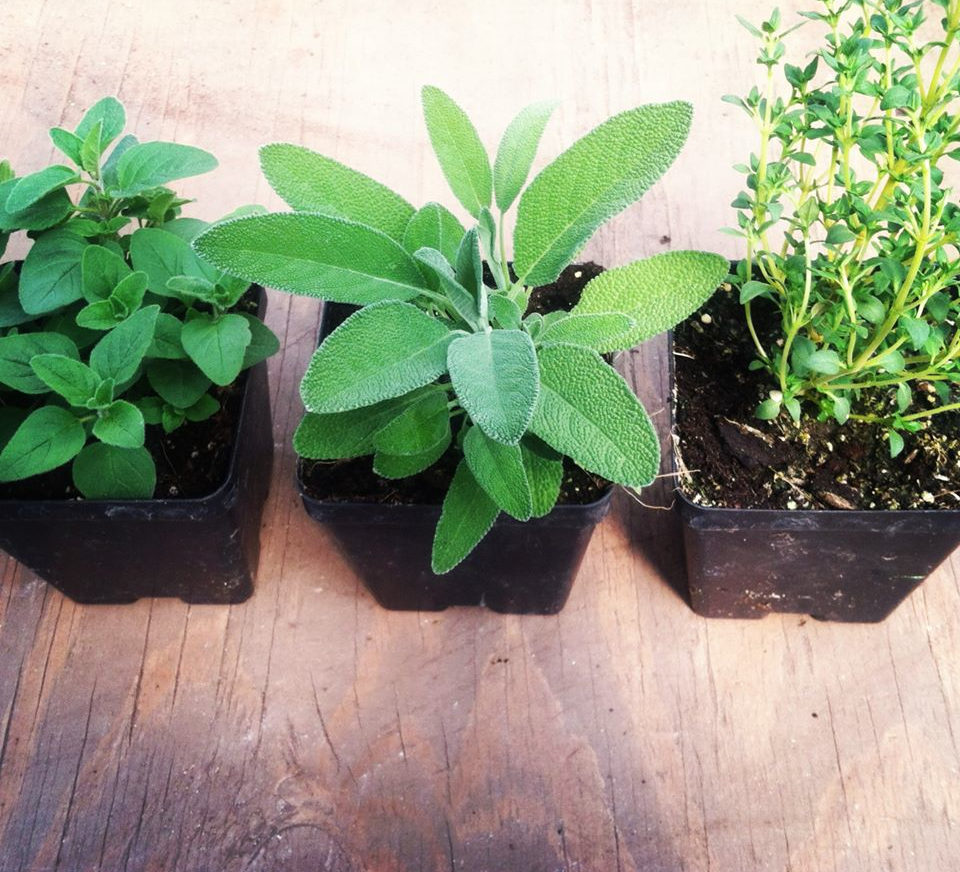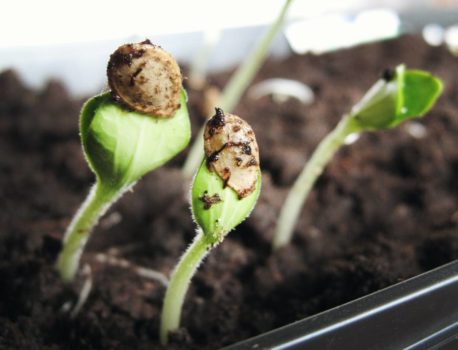Have you noticed how it seems as though every plant has slightly different requirements? Some like lots of water while others can go for days without. Some like to be pruned or trellised while others keep to themselves in a neat little package. This can make gardening infinitely exciting but also a tad frustrating if you don’t know what you’re doing.
Most vegetables you grow are likely started from seed. However, not all of these should be put directly into the ground. I live in Michigan where, even if I successfully germinate a tomato seed in the ground outdoors, there’s little to no chance that I’ll ever see a ripe tomato from that plant. (Soil temps have to be high enough for germination and plant growth prior to flowering can take several weeks, at which point it would be fall and too cold to ripen fruit.)
Direct Seeded Crops
…those that can be seeded directly into the soil and grow into mature plants that can result in a bountiful harvest.
Transplanted Crops
…a.k.a seedlings are those crops that are grown from seed in an indoor setting with a controlled climate, like a greenhouse or your basement. They are then transplanted into the garden after they have established strong enough roots to allow them to hold their own.

There’s a lot of grey area here. For example, I prefer to grow most varieties of kale as transplants including my curly green kale and dino kale. I know I want them spaced 12-18 inches apart for maximum production (i.e., big leaves and a lot of them). I also want them to get a jump on the season in cooler spring weather so I grow them inside where it’s warm first.
I like to direct seed my Red Russian kale variety because I know it grows very vigorously from seed and its leaves are tender and great for salads – I space them more closely (only 6 inches) since I don’t want the leaves to be as large as the varieties I usually use for cooking. (The bigger the leaves, the less tender they are.)
Overwhelmed yet?
Luckily every crop doesn’t require this level of decision making. Most of them are really straight forward. There are several reasons why you might transplant instead direct seed in the garden. Some of these are plant-specific and others have more to do with garden maintenance.
Why Transplant?
- Get a jump on the season. Consistent moisture and warmer temperatures of growing baby plants indoors accelerate growth
- You wouldn’t get a harvest without starting with bigger plants (like the tomato example above)
- Get a head start on weeds. Bigger plants can compete better!
- Have exact plant spacing for ease of weeding. I prefer to use a hula hoe for a lot of my weeding in the garden. The head of the blade is 5 inches so spacing plants tighter than this makes it difficult to weed with my tool.
Why Direct Seed?
- Save resources. Growing indoors can be a waste of precious space and energy. In some cases the plant grows almost as quickly outdoors as it does as a transplant, like with squash and cucumbers.

In other cases you would need a silly number of transplants in order to start them as seedlings so it just makes more sense to plant them directly in the ground, like a large spinach or baby lettuce patch.
2. Some plants don’t like their roots messed with. Even just the act of transplanting can be disturbing enough to stunt their growth! If you do decide to grow some items as transplants that have very sensitive root systems (like things in the cucurbit family), make sure that they don’t become rootbound.
Cucumbers or winter squash, for example, only take about 3 weeks to grow to the size of a single serving yogurt container so make sure not to seed them too early if growing indoors. (Check out this post to learn more about appropriate container sizes for transplants.)
As I mentioned before, you’re almost always going to want to grow or purchase seedlings for many warm season crops like tomatoes, peppers, and eggplants. Root crops like carrots, radishes, and beets almost always fare better when direct seeded in the ground. Others can go either way and depend a bit on factors mentioned above (like weed pressure, amount of space you have for seed starting, etc.) These include spinach, kale, and crops in the cucurbit family.
Some important notes:
- If you decide to direct seed instead of transplant, make sure to plant more than you’ll need and to space things more tightly than you’ll eventually want them. If you get good germination you’ll likely need to thin things out once they start growing. If you get poor germination, you’ll be glad you seeded extra!
- Most crops, whether direct seeded or transplanted, need consistent watering at the seeding stage in order to germinate.
- Don’t jump the gun by planting too early.
- I see lots of people posting pictures of things like beans and melon transplants that have already outgrown their Solo cups, asking if it’s okay to plant them outside. I can often see snow falling in the window. Don’t make this mistake!

Seed packets and seed catalogs are great resources for telling you how long things take to grow as seedlings and when to plant them in relation to outdoor temperatures. You can also check out my seeding schedule which is a great guide for planning.
- Direct seeding warm season crops like cucumbers should wait until the risk of frost has decreased significantly. Otherwise your babies might get nipped!


